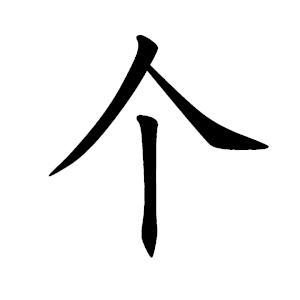个
- unit, individual, single;
Originally meant “bamboo stalk” or “individual piece.”
Usage in Korean
In modern Chinese, it is the most common classifier (양사), used to count people, objects, abstract things, or when the specific measure word is unknown.
Example: 一个人 (한 사람 / one person), 一个东西 (한 물건 / one thing).
Also used more generally for “unit, individual, single” across East Asian languages.
As a classifier:
一个 (one [thing])
两个 (two [units])
As a general noun:
个体 (individual, entity)
个人 (personal, private, individual)
In colloquial speech, can be used emphatically or as a placeholder (“this one,” “that one”).
Additional notes
个 is central in modern Chinese thinking because it emphasizes the individual (个人).
In Confucian society, the collective was often emphasized, but with modernity, 个人主义 (individualism) became a key topic of philosophical and political debate. The very use of 个 to mean “unit” reflects the tension between the whole (集体) and the one (个人).
In Chinese Christian texts, 个人 is often used when translating ideas about the individual soul before God. For example, salvation and responsibility are expressed not only collectively but also “each person (每一个人)” being accountable.
The word thus becomes a bridge for teaching about personal faith and the unique worth of each human being in God’s image.
